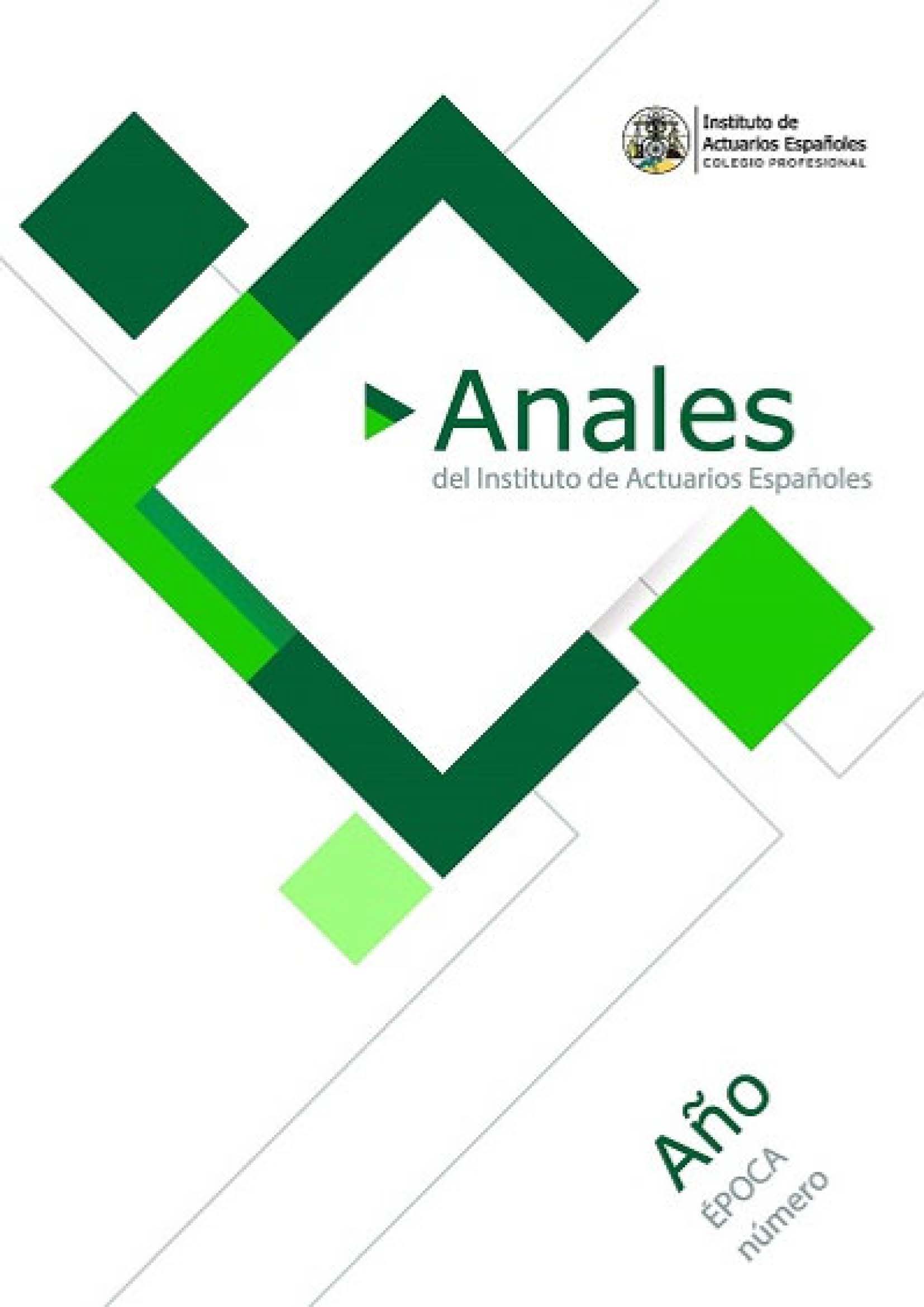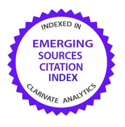Catastrophic risk management: Stochastic hybrid model to calculate the loss index trigger for catastrophe bonds (cat bonds). Adjustment using evolutionary strategies
DOI:
https://doi.org/10.26360/2024_07Keywords:
catastrophic risk management, catastrophe bonds, reported loss amount, incurred-but-not-yet-reported loss amount, hybrid claim reporting rate, evolutionary strategiesAbstract
Purpose: This paper develops a stochastic model to calculate the loss index trigger for catastrophe bonds as alternative instruments for the management of major insured risks, such as natural catastrophe.
Methodology: The underlying loss index of catastrophe bonds is the aggregate catastrophe losses reported before the end of certain period. The catastrophe severity is defined as the sum of two random variable: the reported loss amount and incurred-but-not-yet-reported loss amount, and the central hypothesis is that the latter decreases proportionally to a linearly increasing function up to a certain time and constant thereafter, called the hybrid claim reporting rate. Randomness in the reporting process is represented by a geometric Brownian motion in the claim reporting rate. The validity of the proposed model is evaluated by estimating its parameters using machine learning techniques (specifically, evolutionary strategies, ES).
Findings: The results shows that the model accurately captures the uneven behavior of the claim reporting process over time and therefore correctly describes the catastrophic claims reporting process.
Originality: The model proposed allows for an easy calculation of catastrophic loss indexes, thus facilitating the pricing of loss index-triggered Cat bonds. This translates into better catastrophe risk management for both insurance and reinsurance companies, as well as for those companies that diversify their portfolios with this type of financial instruments. The simplicity of the presented model facilitates parameter estimation and simulation.
Downloads
References
Aase, K. (1999). An Equilibrium Model of Catastrophe Insurance Futures and Spreads. Geneva Papers on Risk and Insurance Theory, 24(1), 69-96
AON (2023). Global Insured Losses From Natural Catastrophes Exceed USD 130 Billion in 2022. AON Report. Retrieved from: https://www.aon.com/getmedia/cdc1da65-5e43-497b-9a35-5471070266ab/Aon_2023_WCCI_Report_EN.pdf
Arnold, L. (1974). Stochastic Differential Equations: Theory and Applications, John Wiley & Sons, Inc, New York
Artemis (2024). Catastrophe bonds & ILS outstanding by trigger type. Retrieved from: https://www.artemis.bm/dashboard/cat-bonds-ils-by-trigger/
Bäck, T. (1996). Evolutionary Algorithms in Theory and Practice. Oxford University Press, Inc.
Baryshnikov, Y., Mayo, A. & Taylor, D.R. (2001). Pricing of Cat Bonds. Working Paper, Version October. Retrieved from: https://citeseerx.ist.psu.edu/viewdoc/download?doi=10.1.1.202.9296&rep=rep1&type=pdf
Biagini, F., Bregman, Y. & Meyer-Brandis, T. (2008). Pricing of catastrophe insurance options written on a loss index with reestimation. Insurance: Mathematics and Economics, 43(2), 214-222
Board of Trade of the City of Chicago (1992). Catastrophe Insurance Futures and Options: A reference Guide. C.B.O.T. Chicago
Bossek, J. (2021). cmaesr: Covariance matrix adaptation evolution strategy in R, Nov. 2021, [online] Retrieved from: https://github.com/jakobbosseklcmaesr
Braun, A. (2011). Pricing catastrophe swaps: A contingent claims approach. Insurance: Mathematics and Economics, 49(3), 520-536
Burnecki, K. & Kukla, G. (2003). Pricing of zero-coupon and coupon cat bonds. Applicationes Mathematicae, 30, 315- 324
Cummins, J. D. & Geman, H. (1995). Pricing Catastrophe Insurance Futures and Call Spreads: An Arbitrage Approach. Journal of Fixed Income, 4 (4), 46-57
Embrechts, P. & Meister, S. (1997). Pricing insurance derivatives, the case of CAT futures. In Proceedings of the 1995 Bowles Symposium on Securitization of Insurance Risk (pp. 15-26), Georgia State University, Atlanta, Georgia. Society of Actuaries, Monograph M-FI97-1
Friedman, A. (1975). Stochastic Differential Equations and Applications, Academic Press, New York
Fogel, D.B. (1997). The Advantages of Evolutionary Computation. Proc. of BCEC97: BioComputing and Emergent Computation, D. Lundh, B. Olsson, and A. Narayanan (eds.), 1-11, World Scientific, Singapore
Geman, H. & Yor, M. (1997). Stochastic time changes in catastrophe option pricing. Insurance: Mathematics and Economics, 21(3),185-193
Holland, J.H. (1975). Adaptation in natural and artificial Systems, MIT Press, Bradford Books edition, Michigan
Jaimungal, S. & Wang, T. (2006). Catastrophe options with stochastic interest rates and compound Poisson losses. Insurance: Mathematics and Economics, 38(3), 469-483
Jarrow, R.A. (2010). A simple robust model for Cat bond valuation. Finance Research Letters, 7, 72-79
Lai, V. S., Parcollet, M. & Lamond, B. F. (2014). The valuation of catastrophe bonds with exposure to currency exchange risk. International Review of Financial Analysis, 33(C), 243-252
Lee, J. P. & Yu, M. T. (2002). Pricing default-risky Cat bonds with moral hazard and basis risk. Journal of Risk and Insurance, 69 (1), 25-44
Loubergé, H., Kellezi, E. & Gilli, M. (1999). Using Catastrophe-Linked Securities to Diversify Insurance Risk: A Financial Analysis of Cat Bonds. Journal of Insurance Issues, 22 (2), 125-146
Malliaris, A. G. & Brock, W. A. (1991). Stochastic Methods in Economics and Finance, North-Holland, Amsterdam
Muermann, A. (2003). Actuarially Consistent Valuation of Catastrophe Derivatives. Working Paper Series The Wharton Financial Institutions Center, 03-18, 2003. Retrieved from: http://citeseerx.ist.psu.edu/viewdoc/download?doi=10.1.1.387.1798&rep=rep1&type=pdf
Nowak, P. & Romaniuk, M (2013). Pricing and simulations of catastrophe Bonds. Insurance: Mathematics and Economics, 52(1), 18-28
Our world in data (2024). Number of deaths from natural disasters, World, 1900 to 2024. OurWorldinData.org/natural-disasters. Retrieved from: https://ourworldindata.org/grapher/number-of-deaths-from-natural-disasters
Pérez-Fructuoso, M. J. (2005). La titulización del riesgo catastrófico: descripción y análisis de los cat bonds (Bonos de Catástrofes). Revista Española de Seguros, 121, 75-92
Pérez-Fructuoso, M. J. (2008). Modelling loss index triggers for CAT bonds: a continuous approach. Variance, 2(2), 253-265
Pérez-Fructuoso, M. J. (2009). Elaborating a catastrophic loss index for insurance-linked securities (ILS): A continuous model. Asia-Pacific Journal of Risk and Insurance, 3(2), 1-13
Pérez-Fructuoso, M. J. (2016). Tarificación de derivados sobre catástrofes con desencadenantes de índices de pérdidas: modelo asintótico basado en un proceso de Wiener. Rect@, 17(1), 81-103
Pérez-Fructuoso, M. J. (2017). Tarificación de bonos sobre catástrofes (cat bonds) con desencadenantes de índices de pérdidas. Modelización mediante un proceso de Ornstein-Uhlenbeck. Revista de métodos Cuantitativos para la Economía y la Empresa, 24, 340-361
Pérez-Fructuoso, M. J. (2022). Comparación de tres modelos estocásticos para calcular un índice de pérdidas desencadenante de los CAT Bonds. Revista Investigación Operacional, 43(2), 228-240
Polacek, A. (2018). Catastrophe bonds: A primer and retrospective. Chicago Fed Leeter, The Federal Reserve Bank of Chicago. https://www.chicagofed.org/publications/chicago-fed-letter/2018/405
Rechenberg, I. (1971) Evolutionsstrategie: Optimierung technischer Systeme nach Prinzipien der biologischen Evolution. Dr.Ing. Thesis, Technical University of Berlin, Department of Process Engineering
Schwefel, H.P. (1981). Numerical Optimization of Computer Models. Wiley&Sons, Chichester
Schwefel, H.P. (1988). Evolutionary learning optimum-seeking on parallel computer architectures. In Proceedings of the International Symposium on Systems Analysis and Simulation 1988, I: Theory and Foundations (pp. 217-225). Akademie-Verlag, Berlin
Törn, A. & Zilinskas, A. (1991). Global Optimization. Lecture Notes in Computer Science, vol 350, Springer, Berlin
Zong-Gang, M. & Chao-Qun, M. (2013). Pricing catastrophe risk Bonds: a mixed approximation method. Insurance: Mathematics and Economics, 52 (2), 243-254
Wang, X. (2016). Catastrophe equity put option with target variance. Insurance: Mathematics and Economics, 71(C), 79-86
Published
How to Cite
Issue
Section
License
Copyright (c) 2024 María José P´érez-Fructuoso, Antonio Berlanga de Jesús

This work is licensed under a Creative Commons Attribution-NonCommercial-NoDerivatives 4.0 International License.


















